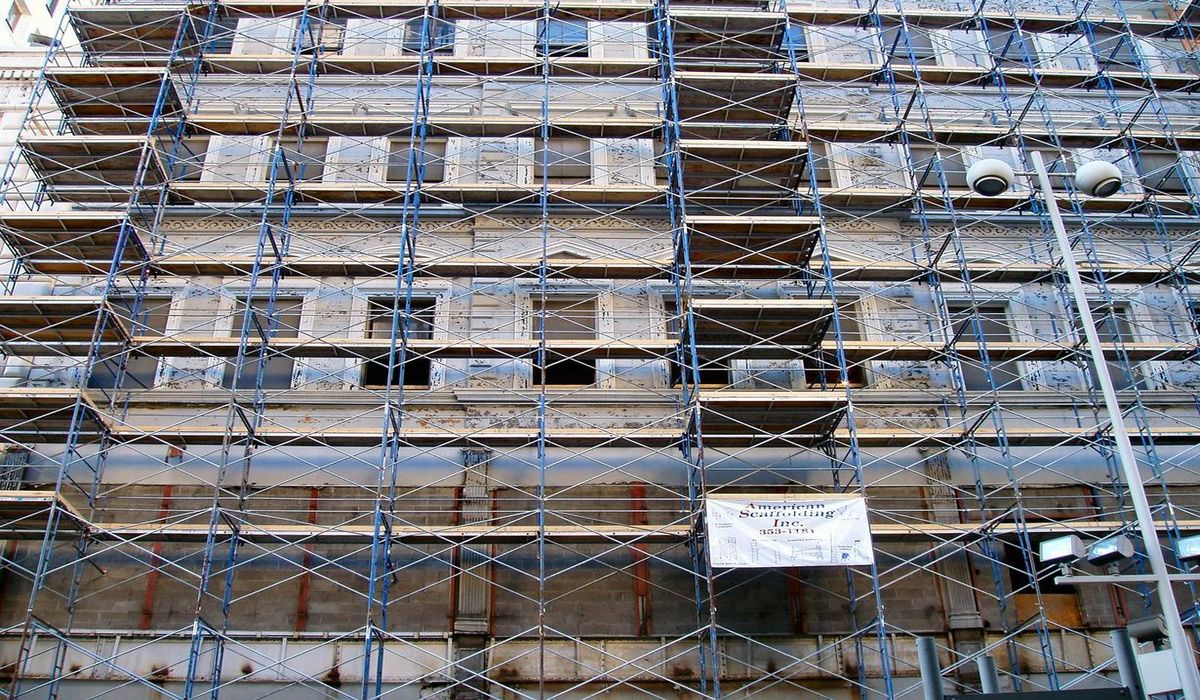
Scaffolding plays a crucial role in construction, providing workers with safe access to high and hard-to-reach areas. But did you know that scaffolding has been around for thousands of years? Ancient Egyptians used it to build the pyramids! Today, scaffolding comes in various types, each suited for different tasks. From suspended scaffolds to mobile scaffolds, each type ensures that construction projects run smoothly and safely. Understanding the different materials used, such as steel and aluminum, can help in choosing the right scaffold for a job. Whether you're a construction pro or just curious, these 36 facts about scaffolding will give you a new appreciation for this essential structure.
What is Scaffolding?
Scaffolding is a temporary structure used to support workers and materials during construction, maintenance, or repair of buildings and other large structures. It ensures safety and accessibility at various heights.
- Scaffolding has been used for thousands of years, dating back to ancient Egypt and China.
- The term "scaffolding" comes from the Old French word "eschafo," meaning a platform.
- Modern scaffolding is typically made from steel or aluminum, providing strength and durability.
- There are three main types of scaffolding: supported, suspended, and rolling.
- Supported scaffolding is the most common type, consisting of platforms supported by poles and frames.
- Suspended scaffolding hangs from the top of a building using ropes or cables.
- Rolling scaffolding is mounted on wheels, allowing for easy movement across a worksite.
- Scaffolding must be inspected regularly to ensure it remains safe and secure.
History of Scaffolding
Scaffolding has a rich history, evolving from simple wooden structures to complex metal frameworks. Its development has been driven by the need for safer and more efficient construction methods.
- Ancient Egyptians used scaffolding to build the pyramids, with evidence of wooden poles and planks found in archaeological sites.
- The Great Wall of China was constructed using bamboo scaffolding, a practice still common in Asia today.
- In medieval Europe, scaffolding was essential for constructing cathedrals and castles.
- The Industrial Revolution brought significant advancements in scaffolding materials and design.
- Metal scaffolding was first introduced in the early 20th century, revolutionizing the construction industry.
- The invention of tubular steel scaffolding in the 1920s allowed for greater flexibility and strength.
- Modern scaffolding systems are designed to be easily assembled and disassembled, reducing labor costs and time.
Safety Measures in Scaffolding
Safety is paramount when working with scaffolding. Proper training, equipment, and procedures are essential to prevent accidents and injuries.
- Workers must wear personal protective equipment (PPE) such as hard hats, gloves, and harnesses.
- Scaffolding should be erected on a stable, level surface to prevent tipping.
- Guardrails and toe boards are required to prevent falls and falling objects.
- Scaffolding must be able to support at least four times the maximum intended load.
- Regular inspections should be conducted by a competent person to identify and address any hazards.
- Workers should be trained in proper scaffolding use and safety procedures.
- Weather conditions, such as high winds or heavy rain, can affect scaffolding stability and should be monitored.
Types of Scaffolding
Different types of scaffolding are used for various construction needs. Each type has its unique features and applications.
- Single scaffolding, also known as bricklayer's scaffolding, is commonly used for brickwork.
- Double scaffolding, or mason's scaffolding, provides extra support for stone masonry work.
- Cantilever scaffolding is used when the ground cannot support standard scaffolding.
- Trestle scaffolding is ideal for indoor work, supported by movable ladders or tripods.
- Steel scaffolding is known for its strength and durability, making it suitable for heavy-duty tasks.
- Patented scaffolding features special couplings and frames, allowing for quick assembly and disassembly.
- Bamboo scaffolding is still widely used in Asia due to its flexibility and eco-friendliness.
Interesting Facts about Scaffolding
Scaffolding plays a crucial role in construction, but there are some lesser-known facts that highlight its importance and versatility.
- Scaffolding can be used for more than just construction, such as for stages at concerts and events.
- The world's tallest scaffolding structure was used during the renovation of the Washington Monument, reaching a height of 555 feet.
- Scaffolding can be customized to fit unique building shapes and sizes, ensuring accessibility for all areas.
- Some scaffolding systems include built-in hoists and elevators to transport materials and workers.
- Scaffolding can be rented or purchased, depending on the project's duration and budget.
- The global scaffolding market is expected to grow significantly, driven by increasing construction activities worldwide.
- Scaffolding has inspired various art installations, showcasing its versatility and aesthetic potential.
Scaffolding: A Closer Look
Scaffolding plays a crucial role in construction, providing workers with safe access to high places. It's been around for centuries, evolving from simple wooden structures to modern steel and aluminum designs. Safety remains the top priority, with strict regulations ensuring stability and worker protection. Innovations like modular scaffolding and advanced materials have made it more efficient and versatile. Understanding the different types, from suspended to rolling scaffolds, helps in choosing the right one for each project. Training and proper maintenance are essential to prevent accidents and ensure longevity. Whether you're a construction professional or just curious, knowing these facts about scaffolding gives you a deeper appreciation for this vital construction tool. Stay informed, stay safe, and next time you see a scaffold, you'll know just how important it is.
Was this page helpful?
Our commitment to delivering trustworthy and engaging content is at the heart of what we do. Each fact on our site is contributed by real users like you, bringing a wealth of diverse insights and information. To ensure the highest standards of accuracy and reliability, our dedicated editors meticulously review each submission. This process guarantees that the facts we share are not only fascinating but also credible. Trust in our commitment to quality and authenticity as you explore and learn with us.
